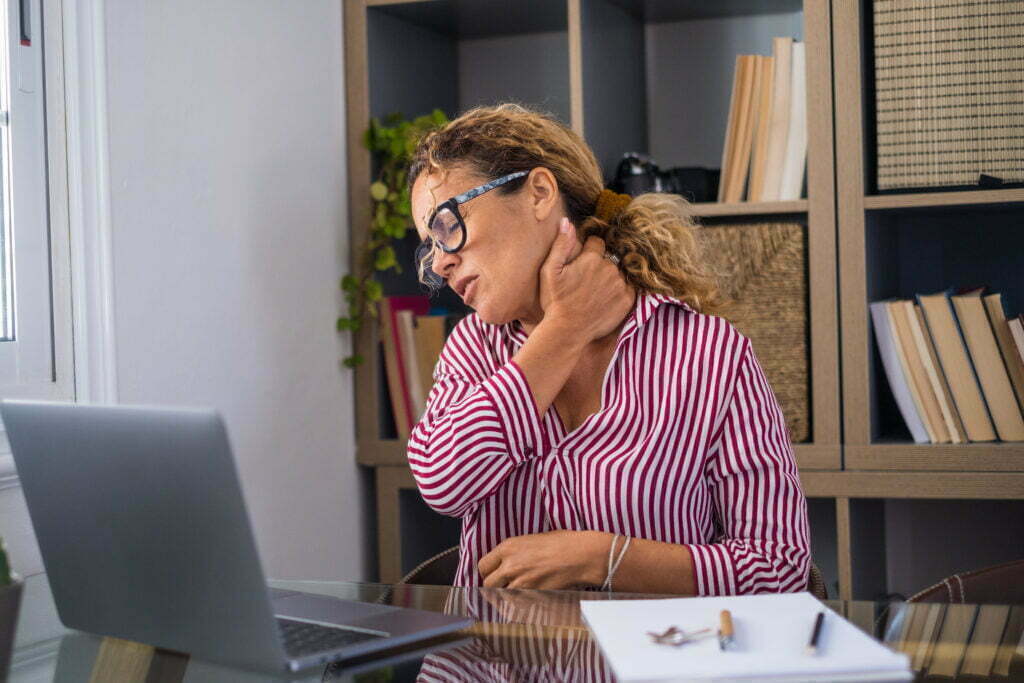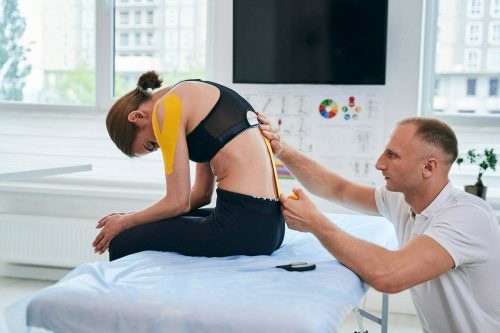Posture disorders are a common issue that affects many people today, leading to a host of physical and emotional problems. Whether it’s due to long hours sitting in front of a computer or carrying heavy bags, poor posture can cause pain and fatigue, and even affect our overall well-being. In this blog post, we’ll explore what posture disorders are, what good posture looks like, and the causes of bad posture. We’ll also discuss the different types of postures and explore how to fix posture problems, to help you feel better and improve your overall health.
What Are Posture Disorders ?


 4.7
4.7
Would you like to receive information about the operations from Vanity Doctors?
As Vanity, we can give you information about the operation you are considering.
Ask the DoctorPosture disorders refer to any condition where the alignment of the body is not in its natural, neutral position. This can lead to a host of problems such as back pain, neck pain, and headaches, and even affect our breathing and digestion. Poor posture can also lead to muscle imbalances and joint problems, which can further contribute to pain and discomfort. Posture disorders can be caused by a variety of factors including injury, muscle weakness, and poor ergonomics.
What Does Good Posture Look Like ?
Good posture is when the body is in its natural, neutral alignment, with the spine in a neutral position. The shoulders should be level and the chest should be open, with the hips and knees in a neutral position. Good posture also involves proper alignment of the head, with the ears in line with the shoulders and the chin parallel to the ground.
In contrast, bad posture is when the body is out of alignment, with the shoulders slouched, the head forward, and the hips and knees in a position that is not neutral. This can lead to a host of problems and pain and can also affect our breathing and digestion.
What Causes Bad Posture ?
There are many factors that can lead to bad posture, including injury, muscle weakness, and poor ergonomics. Sitting for long periods of time in front of a computer, carrying heavy bags, and poor sleeping habits can all contribute to bad posture. In addition, certain medical conditions such as scoliosis, kyphosis, and lordosis can also affect posture.
Types Of Postures
There are many different types of postures, and it’s important to understand the different postures in order to identify and correct any problems. Some common postures include:
- Kyphosis: This is a condition where the upper back is excessively rounded, resulting in a “hunchback” appearance.
- Lordosis: This is a condition where the lower back is excessively curved, resulting in an exaggerated “swayback” appearance.
- Scoliosis: This is a condition where the spine is curved to the side, resulting in a “S-shaped” appearance.
- Military posture: This is a posture where the shoulders are pulled back and the chest is pushed out, resulting in a “stand at attention” appearance.
- Slumped posture: This is a posture where the shoulders are rounded forward and the head is forward, resulting in a “slumped” appearance.
- Flat Back posture: This is a posture where the lower back is excessively flattened, resulting in a “military parade” appearance.
- Forward head posture: this is a posture where the head is in front of the shoulders and the neck extends forward.
Good Posture Vs Bad Posture

Good posture is when the body is in its natural, neutral alignment, with the spine in a neutral position. In contrast, bad posture is when the body is out of alignment, with the shoulders slouched, the head forward, and the hips and knees in a position that is not neutral. Good posture can help improve breathing, digestion, and overall well-being, while bad posture can lead to a host of problems such as pain, and fatigue, and even affect our overall health.
Bad Sitting Posture
Sitting for long periods of time in front of a computer, working at a desk, or using a mobile device can contribute to bad posture. Sitting with a slouched or rounded back, with the shoulders forward and the head down can lead to a host of problems such as back pain, neck pain, and headaches. Additionally, poor ergonomics such as using a chair that doesn’t provide adequate support or using a computer or mobile device at an improper height can further contribute to bad posture.
Male Posture
Men, just like women, can develop posture disorders as well. Men are just as likely to develop poor posture from long hours sitting in front of a computer or carrying heavy bags. Additionally, certain physical activities such as weightlifting can also contribute to poor posture if not done correctly. Men should be just as mindful of their posture and make adjustments as needed to prevent pain and discomfort.
How To Fix Posture Problems
There are many ways to improve posture and fix posture problems. Here are some tips:
- Maintain proper ergonomics: Make sure your computer or mobile device is at the proper height, use a chair that provides adequate support, and take frequent breaks to stretch and move.
- Strengthen your core muscles: Strong core muscles help support the spine and improve posture.
- Stretch: Regular stretching can help improve posture by releasing tight muscles and increasing flexibility.
- Practice good posture: Stand up straight, with your shoulders back and your head in a neutral position. Sit with your back against the chair and your feet flat on the ground.
- Take care of your spine: Regular Chiropractic or Physiotherapy sessions can help with adjustments and maintaining good spinal health
- Incorporate exercises: Yoga and Pilates are good choices to improve balance and posture.
It’s important to remember that posture disorders are a common issue, and that proper posture is essential for overall health and well-being. By understanding what posture disorders are, what good posture looks like, and the causes of bad posture, we can take steps to improve our posture and prevent pain and discomfort. Remember to keep your core muscles strong, stretch regularly, maintain proper ergonomics, and practice good posture. By taking these steps, we can improve our posture and prevent pain and discomfort, helping us feel better and improve our overall health.





